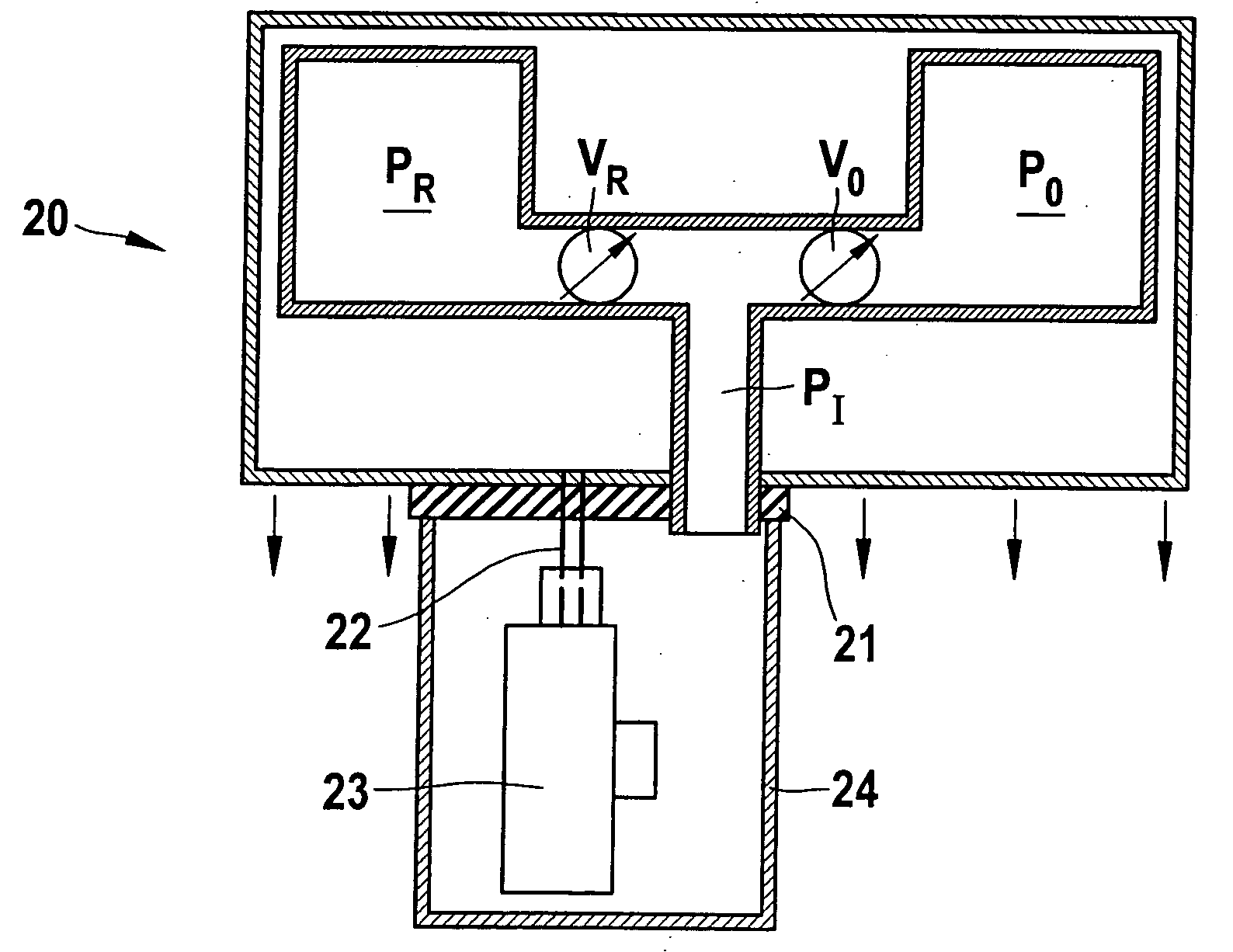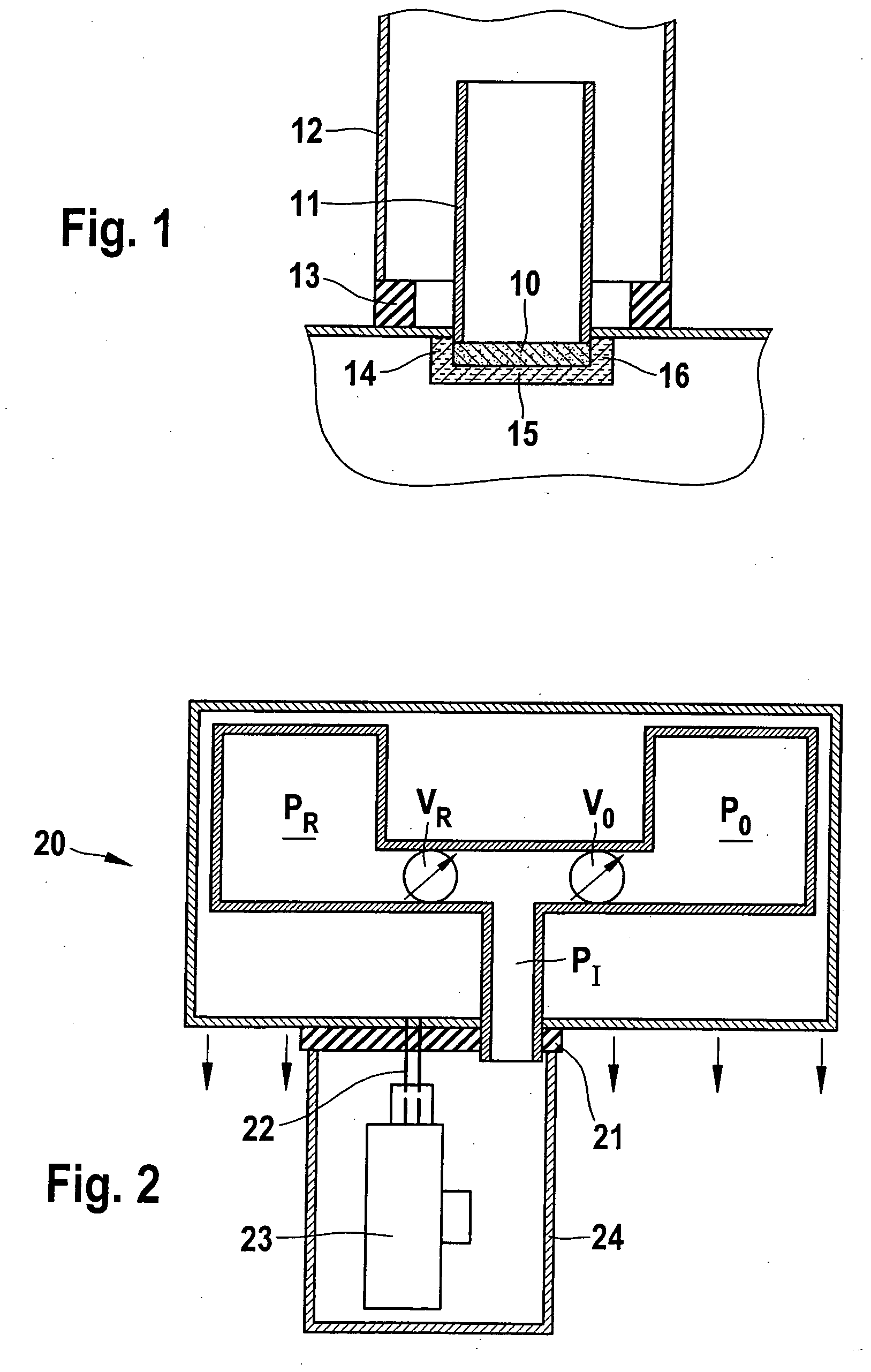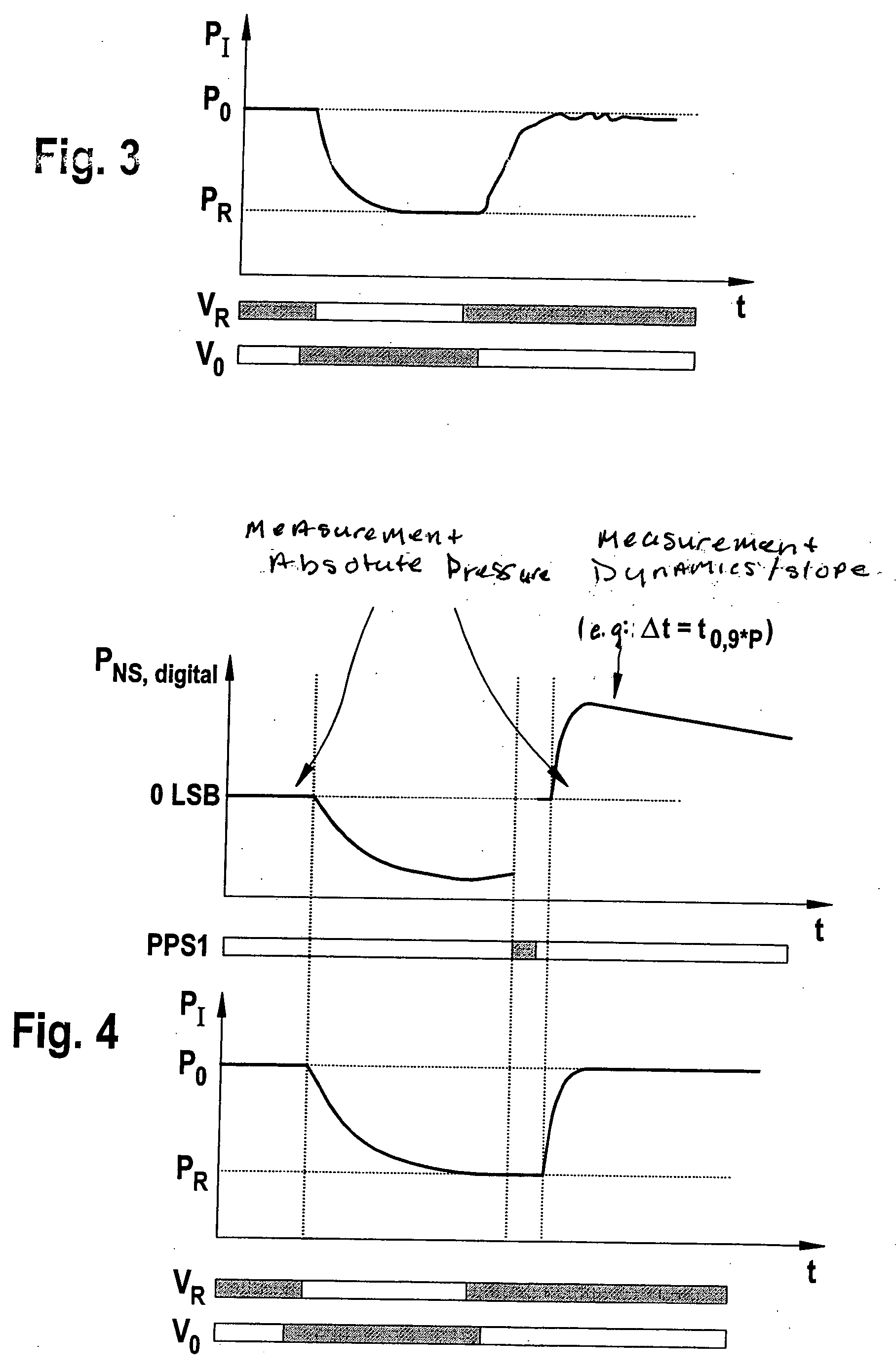Device for testing at least one pressure sensor
- Summary
- Abstract
- Description
- Claims
- Application Information
AI Technical Summary
Benefits of technology
Problems solved by technology
Method used
Image
Examples
Embodiment Construction
[0013] Pressure sensors are increasingly being used for impact sensing. In this context, the pressure sensors are frequently installed in lateral cavities of a vehicle, so that if there is an impact upon the wall of the cavity, based on the rapid deformation and thus volume reduction, one may measure a brief adiabatic pressure increase, in order thereby to have a rapid sensing method for a side impact. These pressure sensors may be produced micromechanically. Usually this involves micromechanics based on silicon. In this context, using micromechanical technology, a diaphragm is produced, about which an evaluation circuit is provided. The evaluation circuit having a measuring amplifier generates the measuring signal which then, using a transmitter module, is transmitted to a control unit, which also activates means of restraint, as a function of this signal. The diaphragm of the pressure sensor, as represented above, is exposed to the medium in the lateral cavity. In order to protect...
PUM
 Login to View More
Login to View More Abstract
Description
Claims
Application Information
 Login to View More
Login to View More - R&D
- Intellectual Property
- Life Sciences
- Materials
- Tech Scout
- Unparalleled Data Quality
- Higher Quality Content
- 60% Fewer Hallucinations
Browse by: Latest US Patents, China's latest patents, Technical Efficacy Thesaurus, Application Domain, Technology Topic, Popular Technical Reports.
© 2025 PatSnap. All rights reserved.Legal|Privacy policy|Modern Slavery Act Transparency Statement|Sitemap|About US| Contact US: help@patsnap.com



